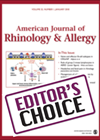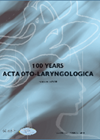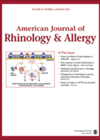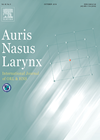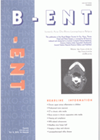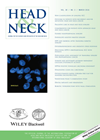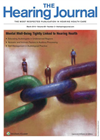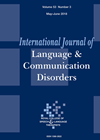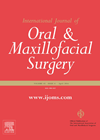
Journal Reviews archive for May 2016
The microbiological environment of the paranasal sinuses
This article reviews the ecology of the sinuses and tries to make sense of the confusing literature on the subject. This covers the details of molecular studies, particularly those which attempt to differentiate normal sinuses from those in patients with...
Implantable devices and large magnets – do they mix well?
Although all brands are MRI safe at 1.5 T, the active middle ear implant system Vibrant Soundbridge (VSB), is special since it houses two magnets. These include a magnetic floating mass transducer (FMT) and an audioprocessor fixing receiver magnet which...
Olfactory neuronal damage in sinusitis
So many patients with nasal disorders have poor olfactory function, yet sometimes the nose may seem comparatively clear of conductive problems. This study postulated that neuronal damage in the olfactory apparatus would lead to a leakage of neuron specific enolase...
What are the non-inflammatory causes of a conductive loss?
This retrospective study looked at patients with an intact tympanic membrane with non-inflammatory causes – i.e. otitis media and cholesteotoma. They document their findings based on exploratory tympanotomy. They operated depending on the findings with either a stapedectomy or a...
Robot controlled mastoid surgery!
This is a fascinating piece of work by a Korean team developing a human-robot collaborative control. Their model uses image guidance surgery to locate the drill tip’s position. Important structures can be highlighted – in this case the facial nerve....
Is epistaxis affected by the weather?
In this Bosnian study, the authors attempted to determine if air pressure, temperature and humidity had any effect on idiopathic epistaxis. The study took place over a three-year period and included 300 patients. A comparison was performed of meteorological data...
Assessing surgical tracheostomy skills
Surgical tracheostomy is an essential operation that trainees must be competent in. There is a lot of research currently looking into assessing trainees’ surgical abilities, particularly into assessments that can be used to demonstrate progress, so this article is very...
Difficult consultations with HPV-positive oropharnyeal cancer patients
The aetiological role of human papillomavirus (HPV) in oropharyngeal squamous cell carcinoma (OPSCC) is well established, and its incidence has massively increased over the last decade, whilst the incidence of HPV-negative OPSCC is declining. Although we know that HPV-positive OPSCC...
Auditory neuropathy spectrum disorder
This is a concise summary of auditory neuropathy and current knowledge of the disorder through review of a recently published article. The terminology of this hearing disorder implies the site of the lesion is neural; however the characteristic electrophysical signature...
Working with clients of communication disorders from culturally and linguistically diverse populations
Speech language therapists (SLTs) deliver evidence based services worldwide for communication disorders to culturally and linguistically diverse (CLD) populations. They have to modify their approaches and tailor them to the needs of their students / patients. This article studies the...
Team based learning in speech language pathology graduate courses
According to the author of this article, the role of a speech language pathologist involves clinical problem solving in both diagnostic and treatment processes. Problem solving involves cooperative collaboration with clients and their parents. Therefore, in this pilot study, the...
Carotid artery involvement with head and neck metastases
This is a retrospective review of 27 patients radiologically diagnosed as having metastases involving the common or internal carotid arteries. All patients underwent a salvage neck dissection with surgical carotid peeling. Thirteen of the 27 achieved loco-regional control, five developed...

